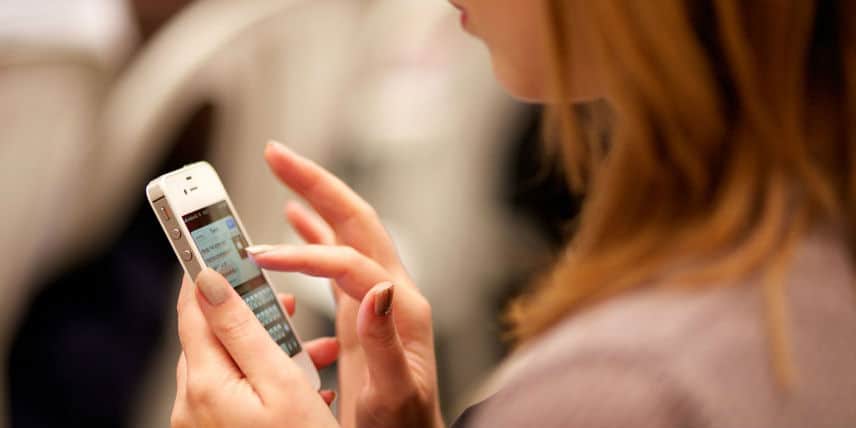People use the term “Disruptive Innovation” to mean a lot of different things, but it actually has a very specific definition. Disruptive Innovation is not the kind of innovation that makes good products better. It’s the kind that takes a product that’s historically been so expensive and complicated or inconvenient that few people can use it, and transforms it into one that’s so simple and affordable that a great many can do so. Examples include TurboTax tax preparation software, which disrupted accountants, and Netflix, which disrupted retail video stores.
So how does that transformation happen? It’s not actually (just) about the product–a fine point that’s critical for would-be healthcare disruptors to understand. A tale of two mobile phones illustrates why.
Tech-eons ago in 2004, the i-mate JAM hit the market, billed as a phone-computer convergence device or “pocket PC”. Three years later, Apple launched the first iPhone. In theory, both products had the potential to disrupt PCs, in enabling consumers to perform some high-utility computing operations on the go. Today, however, it’s tough to find someone who even remembers the i-mate JAM, let alone owned one.
By contrast, the iPhone essentially defined the smartphone as we know it today, which has disrupted PCs. Smartphones have made computing accessible to billions of people around the world who couldn’t afford a PC. And they’ve made it so simple that the average two-year-old can unlock the screen and start streaming a Peppa Pig video in the same amount of time it takes Dad to remember his four-digit password.
So why was it the iPhone, and not the i-mate JAM, that triggered this disruption? Both products were simpler and cheaper than a PC, and launched with similar form factor and types of features. The answer is because Disruptive Innovation isn’t just about the product. It’s about (1) using the product to do a job for consumers that makers of incumbent solutions (in this case, PC manufacturers) are ignoring, and (2) ensuring success by aligning the whole business model toward that end. Makers of the i-mate JAM didn’t do this, Apple did.
The applications feature illustrates their contrasting strategies. Both products came loaded with applications. But whereas i-mate JAM users were pretty much stuck with the original set, Apple created a whole new business model around applications that made their phones infinitely customizable.
On the demand side, Apple created the App Store, to make shopping for apps convenient and engaging. On the supply side, Apple built a community of developers to keep the App Store brimming with options. This required a host of new assets, processes and policies–ranging from tech specifications for developing on Apple platforms, to intellectual property and payment terms–to ensure Apple’s relationship with developers would be productive and sustainable. The result is a thriving digital marketplace that helps consumers solve an endless variety of problems, almost anywhere in the world. But crack open an iPhone and you won’t find it. It’s a business model innovation, not a product innovation.
The lesson Disruption Theory teaches, therefore, is not how to design a product differently, but how to compete differently. Both the i-mate JAM and iPhone were presumably designed to bring computing to the masses–a job PC makers were ignoring. But Apple wrapped the iPhone in a business model that enabled it to do that job better than anything else out there.
How, then, can innovators compete differently to disrupt healthcare? They can target an urgent market need that America’s incumbent, acute care-focused healthcare system isn’t designed to address: the need for care that helps each of us live the longest, healthiest life possible. When innovators design solutions to that end, and deploy them within an enabling business model, they’ll create the conditions for cracking expensive, painful problems like chronic disease. That’s how disruption can make healthcare better and more affordable.
Telemedicine, which enables virtual consultations between healthcare professionals and consumers, represents the choice innovators have about how to compete in healthcare. It’s often deemed disruptive because it makes consultations more convenient and affordable. But if used just to optimize utilization of physicians doing the same job they’ve always done, telemedicine may improve the current acute-care system, but it’s not disruptive.
However, if used to accelerate the healthcare system’s move to population health management–for instance by facilitating stronger relationships with people in their homes and community, and leveraging these to help people better manage their own health–then telemedicine has real disruptive potential.
New healthcare solutions often spark debate around the question, “is it disruptive?” The tale of two mobile phones and a look at contrasting telemedicine strategies tells us that the answer must always be, “it depends”–on how such solutions are deployed. The innovators who ultimately transform healthcare will remember this, and compete differently.
For more, see:
Seize the ACA: The innovator’s guide to the Affordable Care Act



